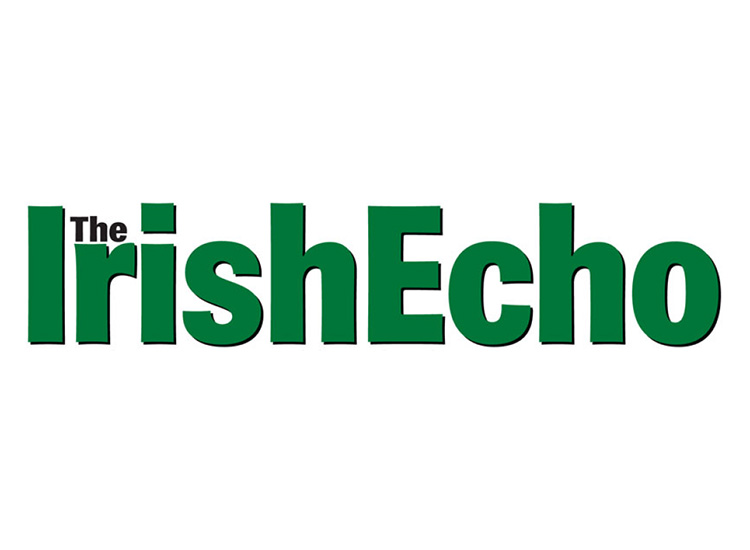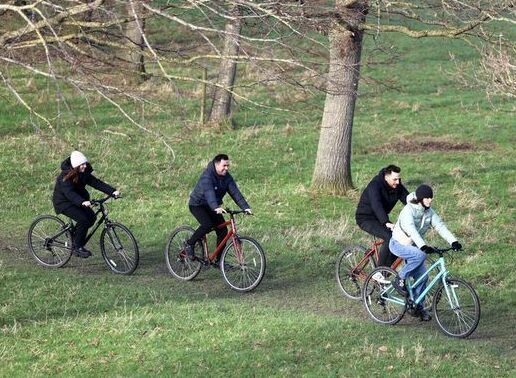The tricolor that flew over O'Connell Street's General Post Office during the Easter Rising in 1916 will be given today to the American Irish Historical Society as part of a long-term loan arrangement.
The flag has been in the possession of the family of prominent nationalist and former Member of Parliament John Sweetman
"It will be a good place for people to go to see it," said Ian Whyte, of the Dublin auction house Whyte's, who is in New York for the formal handover. "We hope that it will still be here in 2016," he said. "It will be a focal point."
The other GPO flag captured in 1916 was given by the Imperial War Museum on the occasion of the 50th anniversary of the Rising to the National Museum in Dublin, where it remains today. It's a variation of the more traditional green flag, but with the legend "Irish Republic" written in traditional, gold Gaelic lettering.
The tricolor flag, which is insured for $1 million, was put up for sale in recent years, but no offers were made for the reserve price of $500,000. Whyte, whose firm specializes in fine art and collectibles, revealed that the family would consider offers at some future point. He said the flag's provenance is clearly established. It was captured by Sgt. Tommy Davis, a member of the Royal Irish Rifles, who was serving with the reserves of the Royal Dublin Fusiliers in Easter 1916.
"He was sent to mop up O'Connell Street," said Whyte, referring to the post-Rising operation.
At that time, the traditional Irish nationalist flag featured a harp against a green background. The tricolor, modeled on the original French republican emblem, dated to the 19th century, but only became widely used from 1916 onwards. It was adopted as the official flag of the Irish Free State (1922-1937), Ireland (from 1937) and then the Republic of Ireland (from 1949).
On Easter Monday, April 24, James Connolly asked Sean T. O'Kelly to get the two flags from a drawer at Liberty Hall, the headquarters of the Irish Transport & General Workers' Union. Both flew above the GPO as Patrick Pearse read the Proclamation of the Republic to bemused and curious citizens. (Pearse was executed on May 3; Connolly on May 12. O'Kelly was president of Ireland from 1945 through 1959.)
Following the Rising, Davis, a veteran of the Boer War, asked to be sent to the Western Front, where his son was serving. The 53-year-old soldier was wounded in fighting before the Battle of the Somme and was sent home to Lisburn, Co. Antrim, to recuperate. He gave the flag to his doctor as a gift.
The elderly Dr. George St. George was closely associated with the Ulster Volunteer Force in Lisburn and was particularly keen to treat members of that militia who'd returned wounded from France. The flag is accompanied by the note: "Captured by British Troops at G.P.O. DUBLIN, APRIL 1916, and given to Dr. George St. George by an old War veteran, Sergt. Davis."
Dr. St. George left it to his daughter Ethelreda upon his death in 1922. And when she died in 1951, her husband, Capt. Samuel Waring MC, passed it on again as a gift to Sweetman's son, who was a neighbor in Kells, Co. Meath. "You would have better use for it than me," the ex-British army officer reportedly said.
The elder Sweetman, who was born in 1844 into a family of Catholic merchants (his father owned a brewery that was later bought by Guinness), became prominent in politics as a supporter of Charles Stewart Parnell and the Irish Land League. In the early 1880s, he traveled to the U.S. Midwest and Canada in his capacity as managing director of the Irish-American Colonization Company.
He took the anti-Parnell side in the split of 1890-1 and was elected to Parliament as a member for Meath in 1892, serving for three years. He later changed allegiances to the Parnellite faction, but by the time that the constitutional nationalists reunited in 1900 he'd become more radical. He helped to found Sinn Féin in 1905. He was the party's second president from 1908 until 1911, when he was succeeded by Arthur Griffith, its best-known member.
The former parliamentarian backed the Anglo-Irish Treaty signed by Griffith and Michael Collins in London in 1921. He shifted his support, however, to Éamon de Valera's new Fianna Fáil party in 1927, because he agreed with its revival of the protectionist policies traditionally associated with Griffith and the old Sinn Féin. (He was not related to Gerard Sweetman, the Fine Gael TD and former minister who was killed in a car crash in 1970.)
Sweetman, who married Agnes Hanly in 1896 and had six children, died in 1936 at the age of 92.
Whyte said that his descendants were very happy with the approach made by the AIHS last year. He will hand over the flag on behalf of the Sweetman family to Dr. Kevin Cahill of the AIHS at its headquarters at 991 Fifth Ave. at 3 p.m.
To contact the AIHS, go to www.aihs.org or call212-288-2263.









